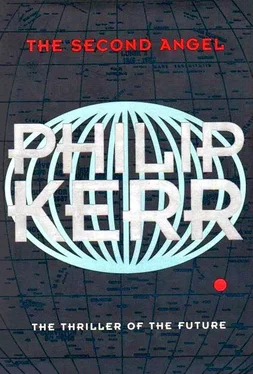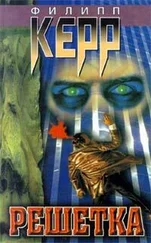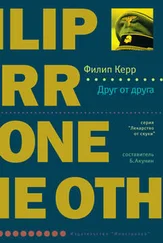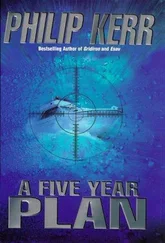Cavor gave Dallas a thumbs-up sign and then said, ‘I feel like a white mouse at the beginning of a scientific experiment.’
‘A white mouse?’ Dallas laughed. ‘Why not a hero like Theseus?’
‘Because Theseus had to face the Minotaur. I know my limitations. If you don’t mind, I’ll stick to being a white mouse.’
‘Theseus did have Ariadne on the end of a golden thread to look forward to, as compensation for his journey.’
‘Is that the best way through a labyrinth?’
‘It’s still the best way out. Not necessarily the best way in.’
‘Find your route by a process of elimination?’
‘Yes, but how to put that process into practice.’
‘Make a sign at every junction,’ said Cavor. ‘And then, encountering such a sign, you should retrace your steps.’
‘One sign wouldn’t be quite enough,’ objected Dallas. ‘Three signs would be better. One to indicate the first route you had taken. And two more signs to indicate your second. After that, never to choose a route with three signs.’
‘Sounds very complicated,’ said Cavor.
‘I’m forced to agree with you,’ said Dallas. ‘I’m not sure if I could find my way into or out of this particular labyrinth.’
‘But you designed it. If you can’t find a way, then who can?’
‘I wouldn’t be the first designer of a multicursal route who was defeated by his own ingenuity,’ admitted Dallas.
‘Then how the hell...?’
‘There is order inside chaos, if only one can see it,’ said Dallas. ‘Fortunately a ball of golden thread is not the only artificial aid to negotiating a labyrinth. These days we have a computer. The layout is logged into my computer’s memory. It will make sense of the contraries and tell us the way through. But keep close. Having come so far together, I wouldn’t like to lose you now. You or your phantom limb.’
They began to walk, and at the first choice of routes Dallas heard the voice of his computer in his headset — any visual display might have alerted the stealth robot — tell him to make a right turn. Chaos was now transposed into a simple pattern. Confusion gave way to order, and in a matter of seconds they were quickly turning one way and then the other. They turned the corner of a curved wall. Its actual height was beyond the limit of Cavor’s infrared flashlight, as was the length of the route itself, and for a moment he was more impressed with the size and apparent complexity of the forbidden, hermetic place they had entered than by Dallas’s continuing description of the phantom limb phenomenon.
‘I’m sure I don’t have to tell you how vivid the sensation of having a phantom limb can be. Men who’ve lost legs commonly try to stand on them. To say nothing of the pain that can persist. There’s been quite a lot of recent research done secretly, by the military, into phantasmagoria. Explanations normally focus on the sensory pathways through the thalamus, to the somatosensory cortex — the pathways that lead through the reticular formation of the brain stem to the limbic system. Finally, there’s the parietal lobe of the brain, essential to the sense of self and the evaluation of the sensory signals. The center of the neurological labyrinth if you like, inasmuch as the brain has a center. The parietal lobe is the area that’s of special interest to scientists today.’
Dallas slowed down. He was walking at such a speed now that occasionally he had to stop and wait for the computer to catch up.
‘Turn right,’ said the electronic voice.
‘People who’ve suffered damage to their parietal lobes have been known to push their own legs out of bed, convinced that they belonged to someone else,’ he said, starting forward again. ‘But just as the parietal lobe can be damaged, equally it can be chemically enhanced.’
‘The drugs you gave me.’
‘Exactly so. Now we go left again. It’s been discovered only recently that the sense of the phantom limb can actually be heightened, so that it might do more than merely occupy the prosthesis, say as a hand fits a glove. I learned of a new technique that exists to develop the sensation of a phantom limb, much as the muscles in an ordinary limb can be developed.’
‘It does feel different,’ admitted Cavor, trailing Dallas around the next turn in the route.
‘I couldn’t take you with me in the simulation because it wouldn’t, couldn’t have worked there. But here, in reality, it can. It will.’
‘But shouldn’t we at least have tried this technique back in the hotel?’ objected Cavor. ‘I mean, suppose it doesn’t work?’
‘Why? When the research shows that it does?’
‘But suppose I’m different? Suppose it doesn’t work for me?’
‘The theory’s quite sound, I can assure you. All the new work that’s being done in the field of extrasensory perception — telepathy, telekinesis — has concentrated on the parietal lobe. But until only a few months ago no one had ever thought of applying that research to the subject of phantom limbs. People used to think that the brain was a passive thing, merely receiving messages from various body parts. That turns out not to be true. The brain, and in particular, the parietal lobe, generates the experience of the body. An experience that can be raised to an entirely higher level. An extrasensory level. Even when no external inputs occur, the brain is capable of generating not just perceptual experience but real experience. It’s possible we don’t actually need a body to feel a body. And that gives a whole new meaning to the old Cartesian idea of “I think, therefore I am.” But that’s another issue. Here we’re concerned with the fact that you don’t need a hand to feel a hand, and more importantly, to use a hand. Now we turn right here, apparently.’
Feeling Cavor’s hand upon his shoulder, Dallas stopped and looked around. ‘Yes?’
To his surprise, the sensation persisted, although now that he was facing Cavor, it was clear that both the other man’s hands were hanging straight down at his sides. For a second he felt a chill. ‘Jesus,’ he muttered, momentarily alarmed. It was another moment or two before he saw Cavor smiling out of his helmet and realized what was happening.
‘What do you know,’ said Cavor. ‘I’m doing it. You can feel it too, right?’
Dallas laughed, delighted at this very tangible demonstration of a theory he had only read about. ‘Fantastic,’ he said, his eyes still searching the empty space between them. ‘I can feel your hand even though I can’t see it.’
Cavor’s fears about imminent radiation sickness were temporarily forgotten as he stood in front of Dallas and now punched him gently on the breast of his EVA suit with the invisible hand.
‘What else can you feel?’ asked Dallas ‘Besides me?’
Cavor turned the invisible limb in the air and described the sensory experiences as they occurred to him. ‘My arm feels cold, like it’s naked or something. Pins and needles, too, like I’ve been lying on it for a while. But the fingers feel like they’ve been dipped in something hot.’ He rippled his fingers. ‘I reckon I could even play the piano again, if I wanted to. Think of that,’ he said, impressed with the possibility. ‘I could play again. I could get my life back. The way it used to be.’ By now he had forgotten the prosthetic arm still hanging by his side. Forgotten, too, the UHT gun the false hand continued to hold. For another brief moment the prosthetic grip persisted and then, deprived of its higher electrical control, relaxed.
The gun clattered to the floor of the labyrinth, firing a short burst of blue electrons that narrowly missed Dallas’s ankle before zipping down the length of the route ahead of them and impacting against its curving steel wall some thirty to forty feet away, in an explosion of heat and light.
Читать дальше












